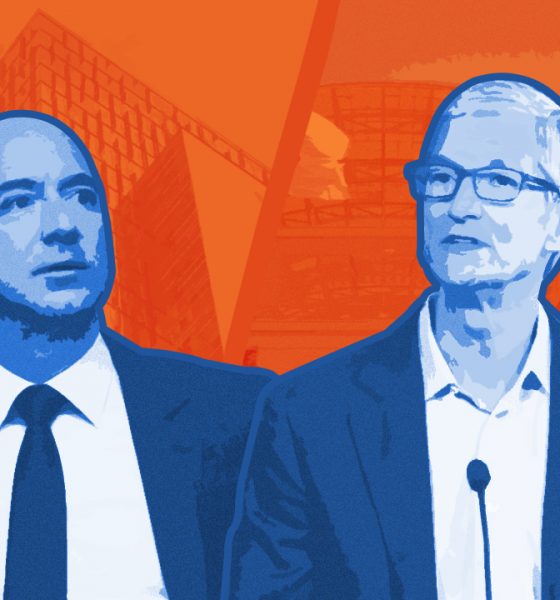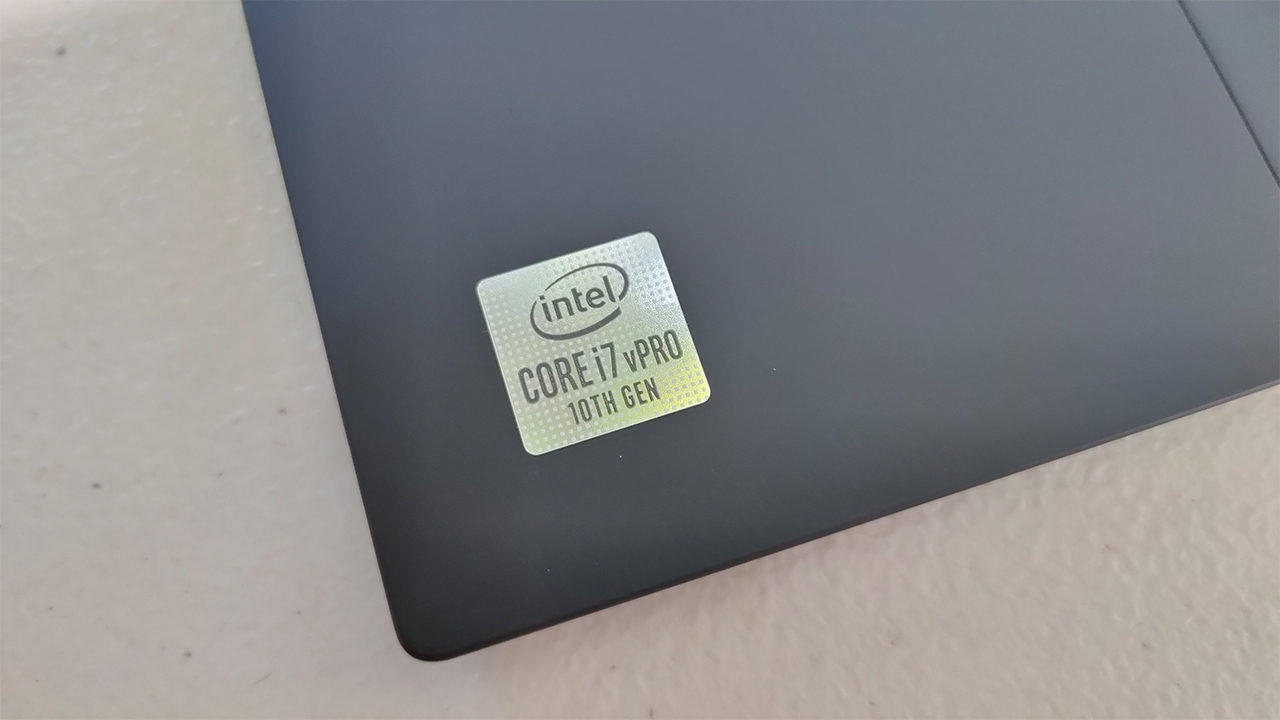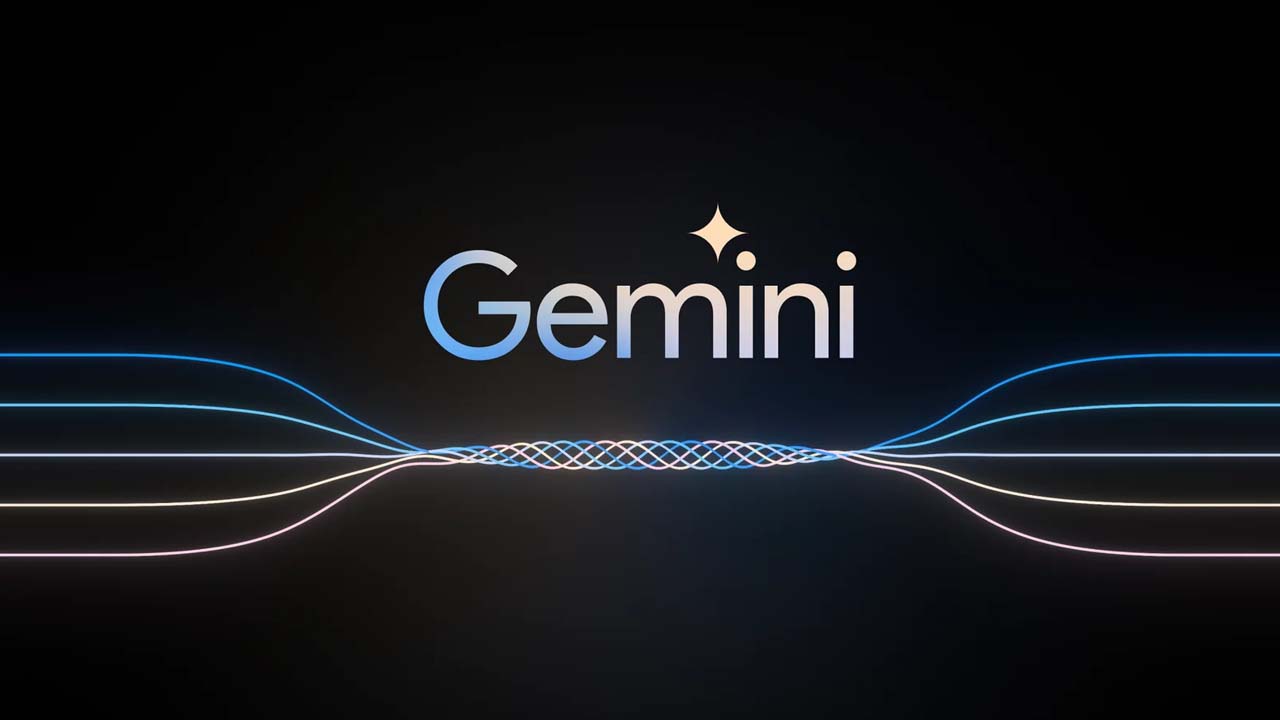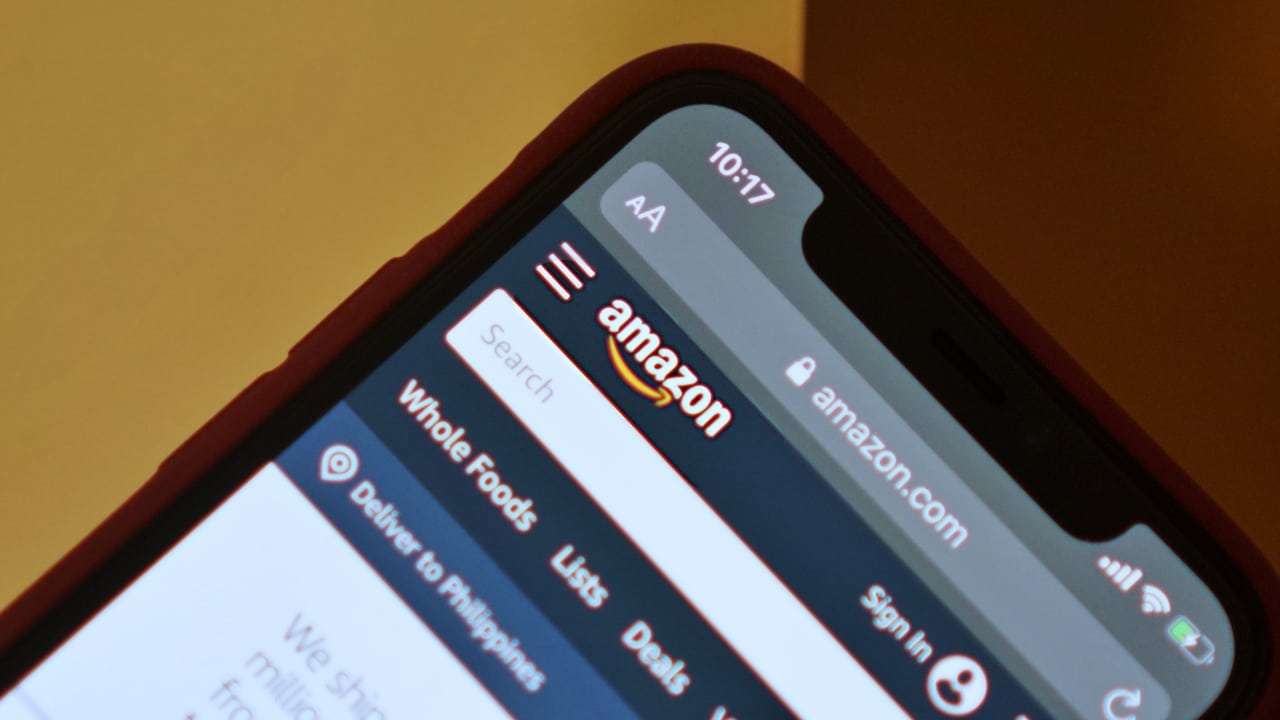

Enterprise
Everything you need to know about the congressional big tech hearing
Why are Apple, Amazon, Facebook, and Google in trouble?
Congressional hearings are uniquely American, and you’ve surely seen them in a movie or show. It’s often the crux, dramatizing a room filled with politicians, media, and the country. Everyone’s attention is glued to the protagonist, who sits in front of the committee and answers their hard-hitting questions. If you really want to see a classic, I’d recommend seeing The Aviator.
Coming back to the point, a similar hearing has grabbed the world’s attention. Often referred to as “big tech”, American internet giants Apple, Amazon, Facebook, and Google are working hard to defend their enormous size, arguing that their dominating position in the market doesn’t stifle competition.
In simpler terms, “big tech” has a market capitalization of more than US$ 4.85 trillion. And, this gives them enough clout to discourage competition and continue their virtual monopoly. When companies become too big, the consequences can be radical since the government will find it harder to regulate them.
Data is the new oil
The American economy has witnessed similar situations before and there are precedents available to curtail a company’s influence. For instance, Standard Oil was among the world’s first and largest multinational companies. It started when oil was a fresh discovery and the world was slowly realizing the fuel’s potential. Officially started in 1870, it grew exponentially in the coming years by acquiring smaller companies, controlling market supply, and chasing maximum efficiency while ignoring antitrust regulations.
By 1890, Standard Oil controlled almost 90 percent of the refined oil business in the US. In the coming years, the company would restructure itself into a holding company that controls more than 40 smaller companies. While these smaller companies were separate entities, all profits went to one parent company. In turn, the parent ensured all the kids work in tandem to improve efficiency and control market dynamics.
Finally, in 1911, Standard Oil’s control came to an end after the US Justice Department prosecuted it via the Sherman Antitrust Act. Standard Oil was dismantled into smaller companies, again. But, they had an independent board of directors and each was left to fend for its own. It essentially meant that Standard Oil, as one entity, no longer existed and the market had dozens of autonomous companies. For consumers, this ensured healthy competition and innovation, while supply chains and associated trade partners were no longer dealing in a pseudo-mafia regime.
Standard Oil of New Jersey and Standard Oil of New York are predecessors of ExxonMobil, Standard Oil of Kentucky became Chevron, and South Penn Oil is known as Shell today. A similar breakup was enforced on telecom giant Bell Systems in 1982 when the parent AT&T, was split into regional companies. One of these sping-offs was Bell Atlantic, today called Verizon.
Big tech and its influence
Data is equivalent to oil or gold. The three together are fundamental pillars of the twenty-first century. Just like Standard Oil started out at the cusp oil discovery, Amazon and Google can be called the early pioneers of the consumer internet.
Equipped with instant connectivity, Amazon created online shopping as we know it today. The internet becomes a stressful place without Google helping us discover basic information. Facebook is quite literally our personal life and everyone around you uses it.
Lastly, Apple is the only significant hardware maker here, but it has surprisingly more control over software thanks to its closed eco-system. These companies are very similar to Standard Oil and can pose a serious threat to encouraging competition. Free market principles also go out the window when someone has majority control.
Apple and its greed for more
The Cupertino-based giant revolutionized music playback thanks to the iPod and iTunes. When Apple sold you the iPod, it made a profit. But you need music to utilize your purchase. So, you buy a track from iTunes, that’s also controlled by Apple. Ultimately, you end up paying more and more to the same company. Thankfully, the system is partially restricted and you can sideload MP3 files, but it’s a cumbersome and discouraging process.
Coming to 2020, apps are everywhere. Apple’s App Store comes pre-installed on iOS devices shipped in the last decade. Apple takes a 30 percent cut on whatever you sell via the App Store. Whether it’s an app or an in-app purchase, Apple will get its share of the revenue. Apple says the store acts as a perfect marketplace for developers as well as users. But, how can a newly started developer or company afford to give away 30 percent of its revenue to Apple as a “service charge?”
Keep in mind, this “big tech” has more than US$ 190 billion in cash. Spotify has publicly called-out Apple for this practice numerous times because it sells monthly streaming plans on its app and can’t afford to part a huge chunk of the payment to Apple. Instead of using Apple’s payment system, it manages its own subscription to save “Apple tax”, an informal slang for Apple’s revenue cut. Even Netflix follows a similar approach. The point is, bigger companies are capable of bypassing Apple’s ecosystem lock, albeit with considerable expenses. Then how can new competition come up from scratch?
It’s practically a monopoly because the developer has two options — take it or leave it. Now, if you’re in the market to sell your app, all iOS devices are out of scope if you don’t adhere to Apple’s demands. And, if you skip the App Store, you’re missing out on all the potential revenue. If you agree with Apple, by an optimistic outlook, you’ll at least get 70 percent of something as revenue? This is the basic working of a monopoly.
The operating system market is a duopoly controlled by Apple’s App Store and Google’s Play Store. While third-party app stores like Amazon App Store, AppGallery, and more exist, ask yourself when was the last time you downloaded something off them?
In Apple’s defense, the company feels it should be able to collect its 30 percent share because it created the current ecosystem. With the launch of the iPhone, the company created a virtual marketplace out of nothing. The company invested in building an ecosystem that has stood the test of time and brings both, the user as well as developer, on the same page.
The company announced earlier this year that it has paid US$ 155 billion to developers since 2008. That’s a lot of money. There’s no denying that Apple kickstarted the “app as a product” philosophy, creating a brand new arena in the digital age. But is it’s control justified after a decade?
Apple has always been conservative about its ecosystem, but it’s efforts to accomplish that are often far-fetched. Recently, the company barred Xbox Gamepass on iOS devices because it “it can’t review every game” that’s being offered by Microsoft. Going by this logic, Apple should also screen or review every show or album that debuts on OTT (over the top) players like Netflix, Prime Video, Spotify, and more.
It’s clear that Apple wants to defend its Apple Arcade subscription service and doesn’t want Microsoft to steal the show with Project xCloud. This means that Xbox Gamepass will be available on Android only. If Apple can strong-arm a giant like Microsoft, isn’t it very obvious that smaller players stand no chance against the brand?
Amazon and its influence on customers
Starting out with just books, today the site has millions of products listed, ranging from a unique screw to a full-fledged air conditioner. What started out as an online marketplace has grown into a tech giant that has dominance in cloud computing, voice assistants, and even video streaming.
Critics say Amazon has frequently used its funding to undercut the competition. It took some losses in the short-term by trying to retain users. Once the user was accustomed to Amazon, a process that lets them avoid visits to a store, the loss turned into profit. With a yearly Prime subscription, you’d get free delivery on the smallest of products. Eventually, the user has recovered its Prime subscription fee in terms of convenience and Amazon has processed more orders than ever.
This model ensured that Amazon has an edge over everyone else. The site closely monitors your movement on the site and can intelligently suggest new products to purchase. The more one buys, the more Amazon earns. And, so do the sellers. This seems like a fair game.
But then, sellers realized Amazon has started recognizing categories that can be directly dominated. The user data they collect shows them precisely how much demand a product has, the price vs sales comparisons, and more. It leveraged this rich and unique data to launch its own product brand called Amazon Basics. If you’d normally buy a USB-C wire for US$ 10, Amazon Basics provided that for a lesser price. And, the Amazon tag garnered trust, luring the buyer away from third-party sellers to Amazon’s in-house accounting.
Now, sellers realized that Amazon used its internal sales data to indirectly push out the competition. Amazon follows a similar strategy in other markets like India. Obviously, a seller can try to sell directly via their own platform using simpler tools like Shopify, but will that match the reachability of Amazon? Can any individual seller match Amazon’s marketing and brand recognition?
The company grew as an e-commerce website but is involved in much more than selling books today, the prime reason why it’s one of the “big tech.” The marketplace’s dominant position helped it start brand new investment streams like Kindle hardware, Alexa speakers, and AWS cloud computing. The e-commerce model had worked very well and investors were fine with the company diversifying, even if it meant losing some projects like the Fire Phone.
Today, the company is bigger than physical establishments like Walmart. It’s going up against eBay, Flipkart, Lazada, AliExpress, and Rakuten in the e-commerce space. AWS is challenging Microsoft Azure, Google Cloud, as well as Alibaba Cloud. Alexa is fighting against Google Assitant, Siri, and Cortana. And lastly, Prime subscription is taking on Netflix and Spotify in one go.
What’s common?
In this article, the most frequently mentioned companies are Apple, Amazon, Google, and Microsoft. Facebook sits in an entirely different vertical, filled with its own unique challenges. However, if you’re trying to do something on the internet, you’ll end up using one of their technology or platform in some way or the other.
And that’s the whole point of the “Big Tech” debate. These companies have grown too much, too quickly. They dominate the publicly known internet and have barely left any space for newcomers. Even if someone dares to do the unthinkable, they’ll be either acquired or pushed into infinite losses.
This is Part 1 of the series. Read Facebook and Google’s involvement in Part 2.


The ongoing trade war between the United States and China is putting a lot of companies out of business in one country. While all eyes are currently on America’s crusade against TikTok, China has launched a salvo of its own. The country has started banning AMD and Intel, starting with government devices.
Recently, as reported by the Financial Times, China has introduced a new rule that bans American chipsets and servers from government agencies. The new ban includes AMD, Intel, and Microsoft Windows.
In lieu of the now-banned brands, Chinese government agencies must use approved brands from a list of 18 Chinese manufacturers. Unsurprisingly, the list includes Huawei, another brand involved in the ongoing trade war. (Huawei is still banned on American soil.)
As with bans from America, China’s latest rules stem from a desire to implement national security. Both countries allege that using brands from the opposing side will open a potential avenue for transferring classified information.
Currently, the ban against the American chipsets are only affecting government devices. However, if it follows the same trajectory as Huawei and TikTok in the United States, a government-only ban might soon lead to an all-out ban on consumer devices. As TikTok is currently hanging in the balance, it’s unlikely that the trade wars will cool down anytime soon.

So far, Apple’s greatest enemy has been the European Union. Months and months of claiming that the company engages in anti-competitive practices, the region has successfully caused Apple to drastically change a lot of things about the iPhone including the Lightning cable. Now, a new challenger wants Apple to answer for its supposed grip on the industry: the United States government.
Today, the Department of Justice is officially suing Apple for supposedly monopolizing the smartphone industry and stifling competition. The lawsuit alleges that Apple’s lineup of products prevent users from trying out other brands. For example, Apple limits how well a third-party smartwatch works on an iPhone, pushing users to go for an Apple Watch instead.
The lawsuit also includes an important pain point in Apple’s fight in Europe. It says that the company makes it difficult for iPhone users to communicate with Android users (and vice versa). Late last year, the company already committed to supporting RCS as a messaging standard, finally easing communication between the two systems. Their adoption has yet to arrive, though.
Though not as stringent as Europe, the American government is no slouch when it comes to questioning its own companies for pursuing anti-competitive practices. In the past, it went through Google and Spotify to protect the interests of its citizens. The lawsuit against Apple is no different, gathering signatures from sixteen states.
For Apple’s part, the company aims to get the case dismissed, alleging the lawsuit’s unfair scope of just the American people when it targets the entire world.
SEE ALSO: Apple opens first Developer Center in Southeast Asia

With how technology is these days, it’s no surprise that the next big thing is always just over the horizon. However, these developments often happen year after year. Today, artificial intelligence is strapping a rocket to this already fast trend. Only a few months since the launch of Gemini, Google has already launched its successor, Gemini 1.5.
Launched only recently, Gemini is a marvel in itself. Prior to the model, Google was already a force in the AI world with Bard. Gemini takes the former model and improves an already impressive service. Currently, users — both in business and for personal use — can subscribe to the service.
Today, Google has confirmed that Gemini 1.5 is official. The company is touting how much more impressive the new version is, compared to its predecessor. For one, Gemini 1.5 Pro is just as powerful as the current Gemini Ultra, beating the latter on 87 percent of tests. The new version is reportedly more efficient in allocating only the necessary resources for queries, rather than the entire model.
Despite allocating resources, Gemini 1.5 can handle a million tokens at a time. For reference, Gemini Pro can only handle 32,000 tokens at a time. Basically, the new version can parse through a humungous chunk of data all at once without batting a digital eye. (Google is claiming that capabilities for 10 million tokens is nearing, too.)
If you want to see what a million tokens in the palm of your hand feels like, Gemini 1.5 is already available for developers and business users. However, a wider rollout is still coming soon.
-

 Accessories2 weeks ago
Accessories2 weeks agoApple Vision Pro Review: Two Months Later
-

 Features4 days ago
Features4 days agoFortify your home office or business setup with these devices
-

 Gaming1 week ago
Gaming1 week agoThe Rogue Prince of Persia looks like an ultra-colorful roguelite
-

 Philippines2 weeks ago
Philippines2 weeks agovivo Y100 to release in Philippines on April 27
-

 Gaming1 week ago
Gaming1 week agoStar Wars Outlaws release date revealed
-

 Events1 week ago
Events1 week agoStellar Blade: PlayStation taps cosplayers to play Eve for game’s launch
-

 Deals2 weeks ago
Deals2 weeks agoSamsung Awesome April: Deals on Galaxy A series
-

 Accessories1 week ago
Accessories1 week agoLogitech unveils G Pro X 60 gaming keyboard: Price, details





























